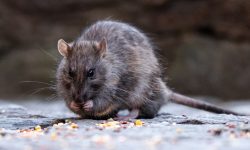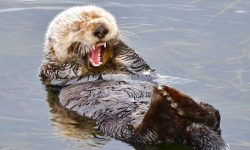Shrimp are some of the most adaptable and resourceful creatures found in oceans, rivers, and lakes around the world. Their ability to thrive in such varied environments comes from their remarkably flexible diet, which allows them to feed on whatever nutrients the ecosystem provides. Whether living in vast coral reefs or quiet freshwater streams, shrimp always find a steady supply of food that supports growth and survival.
In the wild, shrimp are natural scavengers that help keep ecosystems clean. They break down organic matter, consume tiny organisms, and recycle nutrients back into the water. This makes shrimp not only important for their own survival but also essential for maintaining environmental balance. Their feeding habits are surprisingly complex, influenced by water conditions, available prey, and the specific species.
Understanding what shrimp eat gives us a deeper appreciation of how they survive in constantly shifting habitats. Below is the most detailed guide to the 15 natural foods wild shrimp rely on, each supporting hydration, growth, and health in unique ways.
Understanding the Shrimp Diet

Natural scavengers with diverse food habits
Shrimp are opportunistic feeders, meaning they consume whatever small, nutritious items they encounter. Their tiny claws and mouthparts allow them to pick apart debris, algae, and microscopic organisms floating in the water. Because they feed frequently in small amounts, they contribute heavily to water purification and nutrient cycling.
Diet varies by species and environment
Marine shrimp, freshwater shrimp, and brackish-water species all eat slightly different foods depending on their habitat. Coral reef shrimp consume more organic debris and small organisms, while freshwater shrimp often rely on algae, detritus, and biofilm. This adaptability is one reason shrimp thrive almost everywhere in the world.
Hydration and mineral intake come from food
Shrimp absorb moisture and essential minerals from the food they eat. Their diet helps regulate their shells, maintain molting cycles, and support reproductive health. Many foods also provide the building blocks needed for strong exoskeletons, especially calcium and trace elements found in natural substrate.
15 Foods Shrimp Rely on in the Wild
1. Algae
Shrimp feed heavily on algae growing on rocks, driftwood, and substrate. Algae provide minerals, fiber, and natural pigments that support growth and healthy coloration. Shrimp scrape off soft green or brown algae using tiny mouthparts throughout the day.
This natural food source is especially important in clear, sunny waters where algae grow quickly. Shrimp rely on it when other foods are scarce, making it one of their most dependable diet staples.
Algae also help keep shrimp hydrated due to their high moisture content, giving shrimp a steady source of nutrients even in low-current environments.
2. Biofilm
Biofilm is a thin layer of microorganisms that forms on hard surfaces underwater. It contains bacteria, protozoa, yeast, and tiny organic particles. Shrimp consume biofilm continuously because it is dense with nutrients.
Young shrimp depend heavily on biofilm for survival. Its soft texture and natural composition make it easy to digest, helping juveniles grow quickly.
Because biofilm forms everywhere—from stones to leaves—it ensures that shrimp always have access to essential nutrition.
3. Detritus
Detritus consists of decomposing leaves, plant fibers, and organic debris that settle at the bottom of rivers or oceans. Shrimp break down these particles into digestible pieces.
This natural food contains a wide mix of nutrients, including minerals and trace proteins. As shrimp sift through detritus, they help recycle important elements back into the ecosystem.
Shrimp thrive in areas where leaf litter or fallen vegetation accumulates, creating a constant buffet of decaying organic matter.
4. Plankton
Zooplankton and phytoplankton are important food sources, especially for juvenile shrimp. These microscopic organisms float in the water column and are consumed during active swimming periods.
Plankton contain proteins, healthy fatty acids, and vitamins essential for growth. Shrimp filter them from the water using small appendages.
Seasonal plankton blooms provide a massive nutritional boost, allowing shrimp populations to grow rapidly.
5. Microalgae
Microalgae grow on submerged surfaces and in open water. Shrimp nibble on these small organisms throughout the day.
They provide dense nutrition, including chlorophyll, minerals, and carbohydrates. Microalgae also support molting due to their high calcium levels.
Their rapid growth rate ensures shrimp always have access to these nutrient-rich cells.
6. Small Worms
Tiny aquatic worms serve as a protein source for many shrimp species. Shrimp pick them from substrate or detritus piles.
These worms provide essential amino acids that support muscle development and reproduction. They also offer moisture, helping shrimp stay hydrated.
Worm-rich habitats allow shrimp to grow more quickly and maintain stronger immune systems.
7. Micro-crustaceans
Shrimp often feed on copepods, cladocerans, and other microscopic crustaceans. These animals are abundant in healthy waterways.
Their high protein and fat content give shrimp a valuable energy source. Micro-crustaceans are especially important for breeding females and fast-growing juveniles.
Because they move slowly, shrimp can easily capture them with minimal effort.
8. Fish Scraps
Shrimp scavenge on decaying fish material left behind by larger predators. These scraps include skin, scales, and tiny pieces of flesh.
This protein-rich food helps shrimp maintain energy in areas with limited vegetation or algae. Scavenging also keeps the environment clean.
Crevices and rocky areas often accumulate fish remnants, giving shrimp easy access to this nutrient-dense food.
9. Plant Debris
Shrimp consume fragments of dead or decaying aquatic plants. These soft fibers break apart easily and supply vitamins and minerals.
Plant debris helps promote gut movement and digestion. It also provides a steady food supply during dry seasons when fresh vegetation decreases.
Shallow areas with abundant plant life often host large shrimp populations because of this reliable food source.
10. Diatoms
Diatoms are microscopic algae with silica-based shells. Shrimp scrape them from surfaces using their delicate feeding limbs.
These organisms offer concentrated nutrients, including omega fatty acids and essential minerals. Diatoms also help maintain shell health due to their mineral content.
They are especially common in well-lit waters where sunlight supports rapid growth.
11. Dead Insects
Shrimp opportunistically consume dead insects that fall into the water. These insects range from flies to beetles and provide a protein boost.
Shrimp break down these insects into small, digestible pieces using their claws. The high protein content contributes to healthier molting cycles.
Areas near shorelines or overhanging vegetation often deliver a steady insect supply.
12. Larvae of Aquatic Insects
Shrimp feed on insect larvae such as mosquito larvae, midge larvae, and fly larvae. These soft-bodied prey items are easy to swallow.
Larvae contain high moisture and valuable fats that help shrimp maintain energy during active periods. Their abundance in freshwater makes them an important natural food.
Shrimp often hunt larvae during early morning or twilight, when larvae rise closer to the water surface.
13. Sponge Particles
Some marine shrimp consume tiny particles shed from ocean sponges. These fragments are rich in minerals and organic compounds.
Coral reef shrimp encounter sponge debris frequently and incorporate it naturally into their diet. The particles help support shell strength and internal hydration.
This unusual food source demonstrates the shrimp’s ability to utilize nearly every resource available in their environment.
14. Fungi and Microfungi
Fungal spores and microfungi grow on decaying wood and plant matter underwater. Shrimp nibble on these organisms while scavenging.
Fungi provide trace nutrients and aid in digestion by introducing natural enzymes into the shrimp’s system. They also appear consistently in shaded, organic-rich waters.
Young shrimp benefit greatly from these microfungi due to their soft texture and easy absorption.
15. Bacterial Colonies
Shrimp consume bacterial colonies found on substrate, rotting leaves, and decomposing organisms. These bacteria are extremely nutrient-dense.
Bacterial consumption helps support gut health, giving shrimp access to constantly regenerating food. This is vital in habitats where other food sources fluctuate.
Because bacteria thrive almost everywhere underwater, shrimp depend on them as a consistent nutritional foundation.
FAQs About What Shrimp Eat
Do shrimp eat algae in the wild?
Yes, algae are one of the primary natural foods for wild shrimp. They graze on surface algae all day for minerals and hydration.
Do shrimp eat meat?
Shrimp are omnivorous scavengers, so they will eat small amounts of decaying fish, dead insects, or worms when available.
Do baby shrimp eat the same foods as adults?
Baby shrimp rely more heavily on biofilm, microalgae, and plankton, which are soft and easy to digest.
Do shrimp eat fish poop?
Shrimp do not eat waste directly, but they may pick at organic particles mixed with it.
Can shrimp survive without algae?
They can survive temporarily on detritus and microorganisms, but algae are essential for long-term health.
Do shrimp eat fruit or vegetables?
In the wild, they may nibble decomposing plant material, but not whole fruits or vegetables.
Do shrimp eat each other?
Shrimp rarely cannibalize unless food is extremely limited or a shrimp is already dead.
Do shrimp eat plankton at night?
Yes, many shrimp feed on zooplankton that rise to the surface during nighttime hours.
Final Thoughts
Shrimp thrive because they can adapt to nearly any natural food source their habitat provides. Their diet is a blend of algae, microorganisms, detritus, and small prey that sustain them through changing seasons and environments. This remarkable flexibility not only keeps shrimp populations strong but also supports the overall health of aquatic ecosystems. Understanding what shrimp eat helps us appreciate their vital ecological role and their ability to survive in worlds both familiar and unseen.






